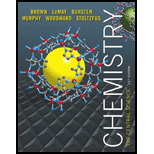
Chemistry: The Central Science (13th Edition)
13th Edition
ISBN: 9780321910417
Author: Theodore E. Brown, H. Eugene LeMay, Bruce E. Bursten, Catherine Murphy, Patrick Woodward, Matthew E. Stoltzfus
Publisher: PEARSON
expand_more
expand_more
format_list_bulleted
Concept explainers
Textbook Question
Chapter 5, Problem 108AE
Three common hydrocarbons that contain four carbons are listed here, along with their standard enthalpies of formation:

(a) For each of these substances, calculate the molar enthalpy of combustion to CO2(s) and H2O(l). (b) Calculate the fuel value, in kJ/ g, for each of these compounds. (c) For each hydrocarbon, determine the percentage of hydrogen by mass.(d) By comparing your answers for parts (b) and (c), propose a relationship between hydrogen content and fuel value in hydrocarbons.
Expert Solution & Answer
Want to see the full answer?
Check out a sample textbook solution
Chapter 5 Solutions
Chemistry: The Central Science (13th Edition)
Ch. 5.2 - Prob. 5.1.1PECh. 5.2 - Prob. 5.1.2PECh. 5.3 - Prob. 5.2.1PECh. 5.3 - Prob. 5.2.2PECh. 5.3 - Prob. 5.3.1PECh. 5.3 - Prob. 5.3.2PECh. 5.4 - Prob. 5.4.1PECh. 5.4 - Prob. 5.4.2PECh. 5.5 - Prob. 5.5.1PECh. 5.5 - Prob. 5.5.2PE
Ch. 5.5 - Practice Exercise 1 Suppose you have equal masses...Ch. 5.5 - Prob. 5.6.2PECh. 5.5 - Prob. 5.7.1PECh. 5.5 - Prob. 5.7.2PECh. 5.6 - Prob. 5.8.1PECh. 5.6 - Prob. 5.8.2PECh. 5.6 - Prob. 5.9.1PECh. 5.6 - Prob. 5.9.2PECh. 5.7 - Prob. 5.10.1PECh. 5.7 - Prob. 5.10.2PECh. 5.7 - Prob. 5.11.1PECh. 5.7 - Prob. 5.11.2PECh. 5.7 - Prob. 5.12.1PECh. 5.7 - Practice Exercise 2 Use Table 5.3 to calculate the...Ch. 5.8 - Prob. 5.13.1PECh. 5.8 - Practice Exercise 2 Given the following standard...Ch. 5.8 - Prob. 5.14.1PECh. 5.8 - Prob. 5.14.2PECh. 5 - Prob. 1DECh. 5 - Prob. 1ECh. 5 - Prob. 2ECh. 5 - Prob. 3ECh. 5 - Practice Exercise 2
Using Table 20.1, rank...Ch. 5 - Prob. 5ECh. 5 - Prob. 6ECh. 5 - Prob. 7ECh. 5 - Prob. 8ECh. 5 - Prob. 9ECh. 5 - Prob. 10ECh. 5 - Prob. 11ECh. 5 - Prob. 12ECh. 5 - Prob. 13ECh. 5 - Prob. 14ECh. 5 - Prob. 15ECh. 5 - Prob. 16ECh. 5 - Prob. 17ECh. 5 - Prob. 18ECh. 5 - Prob. 19ECh. 5 - Prob. 20ECh. 5 - Prob. 21ECh. 5 - Prob. 22ECh. 5 - Prob. 23ECh. 5 - Prob. 24ECh. 5 - Prob. 25ECh. 5 - Prob. 26ECh. 5 - Prob. 27ECh. 5 - In chemical kinetics, the entropy of activation is...Ch. 5 - Prob. 29ECh. 5 - Prob. 30ECh. 5 - Prob. 31ECh. 5 - The following data compare the standard enthalpies...Ch. 5 - Prob. 33ECh. 5 - Prob. 34ECh. 5 - Prob. 35ECh. 5 - What is the reducing agent in the following...Ch. 5 - Prob. 37ECh. 5 - Prob. 38ECh. 5 - Prob. 39ECh. 5 - Prob. 40ECh. 5 - Prob. 41ECh. 5 - Prob. 42ECh. 5 - Prob. 43ECh. 5 - The standard cell potential is 1.46 V for a...Ch. 5 - Prob. 45ECh. 5 - Prob. 46ECh. 5 - Prob. 47ECh. 5 - Prob. 48ECh. 5 - Prob. 49ECh. 5 - Practice Exercise 1
Which of the following...Ch. 5 - Prob. 51ECh. 5 - Prob. 52ECh. 5 - Prob. 53ECh. 5 - Prob. 54ECh. 5 - Prob. 55ECh. 5 - Prob. 56ECh. 5 - Prob. 57ECh. 5 - Prob. 58ECh. 5 - Prob. 59ECh. 5 - Prob. 60ECh. 5 - What is the connection between Hess’s law and the...Ch. 5 - Prob. 62ECh. 5 - 20.2 You may have heard that “antioxidants” are...Ch. 5 - Prob. 64ECh. 5 - Prob. 65ECh. 5 - Prob. 66ECh. 5 - Prob. 67ECh. 5 - Prob. 68ECh. 5 - Prob. 69ECh. 5 - Prob. 70ECh. 5 - Prob. 71ECh. 5 - Prob. 72ECh. 5 - 20.13
What is meant by the term oxidation?
On...Ch. 5 - Prob. 74ECh. 5 - Prob. 75ECh. 5 - Prob. 76ECh. 5 - Prob. 77ECh. 5 - Prob. 78ECh. 5 - Prob. 79ECh. 5 - Prob. 80ECh. 5 - Prob. 81ECh. 5 - Prob. 82ECh. 5 - Prob. 83ECh. 5 - Prob. 84ECh. 5 - Prob. 85ECh. 5 - The heat of combustion of ethanol, C2H5OH(l) is...Ch. 5 - Prob. 87ECh. 5 - Prob. 88ECh. 5 - Prob. 89ECh. 5 - The automobile fuel called E85 consists of 85%...Ch. 5 - Prob. 91AECh. 5 - Prob. 92AECh. 5 - Prob. 93AECh. 5 - Prob. 94AECh. 5 - 5.95 Consider a system consisting of the following...Ch. 5 - A sample of gas is contained in a...Ch. 5 - Prob. 97AECh. 5 - Prob. 98AECh. 5 - A house is designed to have passive solar energy...Ch. 5 - Prob. 100AECh. 5 - Prob. 101AECh. 5 - Prob. 102AECh. 5 - Burning methane in oxygen can produce three...Ch. 5 - Prob. 104AECh. 5 - Prob. 105AECh. 5 - The hydrocarbons acetylene (C2H2) and benzene...Ch. 5 - Prob. 107AECh. 5 - Three common hydrocarbons that contain four...Ch. 5 - Prob. 109AECh. 5 - The Sun supplies about 1.0 kilowatt of energy for...Ch. 5 - It is estimated that the net amount of carbon...Ch. 5 - Prob. 112IECh. 5 - Prob. 113IECh. 5 - Prob. 114IECh. 5 - Prob. 115IECh. 5 - Prob. 116IECh. 5 - Prob. 117IECh. 5 - The methane molecule, CH4, has the geometry shown...Ch. 5 - Prob. 119IE
Knowledge Booster
Learn more about
Need a deep-dive on the concept behind this application? Look no further. Learn more about this topic, chemistry and related others by exploring similar questions and additional content below.Similar questions
- When 2.50 g of methane burns in oxygen, 125 kJ of heat is produced. What is the enthalpy of combustion per mole of methane under these conditions?arrow_forwardWhen one mol of KOH is neutralized by sulfuric acid, q=56 kJ. (This is called the heat of neutralization.) At 23.7C, 25.0 mL of 0.475 M H2SO4 is neutralized by 0.613 M KOH in a coffee-cup calorimeter. Assume that the specific heat of all solutions is 4.18J/gC, that the density of all solutions is 1.00 g/mL, and that volumes are additive. (a) How many mL of KOH is required to neutralize H2SO4? (b) What is the final temperature of the solution?arrow_forwardThe enthalpy of combustion of diamond is -395.4 kJ/mol. C s, dia O2 g CO2 g Determine the fH of C s, dia.arrow_forward
- The enthalpy change for the following reaction is 393.5 kJ. C(s,graphite)+O2(g)CO2(g) (a) Is energy released from or absorbed by the system in this reaction? (b) What quantities of reactants and products are assumed? (c) Predict the enthalpy change observed when 3.00 g carbon burns in an excess of oxygen.arrow_forwardIn the process of isolating iron from its ores, carbon monoxide reacts with iron(III) oxide, as described by the following equation: Fe2O3(s)+3CO(g)2Fe(s)+3CO2(g)H=24.8kJ The enthalpy change for the combustion of carbon monoxide is 2CO(g)+O2(g)2CO2(g)H=566kJ Use this information to calculate the enthalpy change for the equation 4Fe(s)+3O2(g)2Fe2O3(s)H=?arrow_forwardWhat mass of acetylene, C2H2(g), must be burned to produce 3420 kJ of heat, given that its enthalpy of combustion is 1301 kJ/mol? Compare this with the answer to Exercise 5.91 and determine which substance produces more heat per gram.arrow_forward
- Explain why absolute enthalpies and energies cannot be measured, and only changes can be determined.arrow_forwardWhat is the difference between the enthalpy of reaction and the enthalpy of formation? For what chemical reaction(s) are the two quantities the same?arrow_forwardCombustion of table sugar produces CO2(g) and H2O( l). When 1.46 g table sugar is combusted in a constant-volume (bomb) calorimeter, 24.00 kJ of heat is liberated. a. Assuming that table sugar is pure sucrose, C12H22O11 (s), write the balanced equation for the combustion reaction. b. Calculate E in kJ/mol C12H22O11 for the combustion reaction of sucrose.arrow_forward
- In a constant-volume calorimeter, 35.0g of H2cools from 75.3C to25.0C. Calculate w, q, U, and H for the process.arrow_forwardUnder what circumstances is the heat of a process equal to the enthalpy change for the process?arrow_forwardA 29.1-mL sample of 1.05 M KOH is mixed with 20.9 mL of 1.07 M HBr in a coffee-cup calorimeter (see Section 6.6 of your text for a description of a coffee-cup calorimeter). The enthalpy of the reaction, written with the lowest whole-number coefficients, is 55.8 kJ. Both solutions are at 21.8C prior to mixing and reacting. What is the final temperature of the reaction mixture? When solving this problem, assume that no heat is lost from the calorimeter to the surroundings, the density of all solutions is 1.00 g/mL, and volumes are additive.arrow_forward
arrow_back_ios
arrow_forward_ios
Recommended textbooks for you
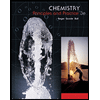 Chemistry: Principles and PracticeChemistryISBN:9780534420123Author:Daniel L. Reger, Scott R. Goode, David W. Ball, Edward MercerPublisher:Cengage Learning
Chemistry: Principles and PracticeChemistryISBN:9780534420123Author:Daniel L. Reger, Scott R. Goode, David W. Ball, Edward MercerPublisher:Cengage Learning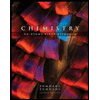 Chemistry: An Atoms First ApproachChemistryISBN:9781305079243Author:Steven S. Zumdahl, Susan A. ZumdahlPublisher:Cengage Learning
Chemistry: An Atoms First ApproachChemistryISBN:9781305079243Author:Steven S. Zumdahl, Susan A. ZumdahlPublisher:Cengage Learning Chemistry: The Molecular ScienceChemistryISBN:9781285199047Author:John W. Moore, Conrad L. StanitskiPublisher:Cengage Learning
Chemistry: The Molecular ScienceChemistryISBN:9781285199047Author:John W. Moore, Conrad L. StanitskiPublisher:Cengage Learning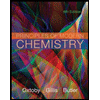 Principles of Modern ChemistryChemistryISBN:9781305079113Author:David W. Oxtoby, H. Pat Gillis, Laurie J. ButlerPublisher:Cengage Learning
Principles of Modern ChemistryChemistryISBN:9781305079113Author:David W. Oxtoby, H. Pat Gillis, Laurie J. ButlerPublisher:Cengage Learning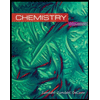 ChemistryChemistryISBN:9781305957404Author:Steven S. Zumdahl, Susan A. Zumdahl, Donald J. DeCostePublisher:Cengage Learning
ChemistryChemistryISBN:9781305957404Author:Steven S. Zumdahl, Susan A. Zumdahl, Donald J. DeCostePublisher:Cengage Learning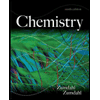

Chemistry: Principles and Practice
Chemistry
ISBN:9780534420123
Author:Daniel L. Reger, Scott R. Goode, David W. Ball, Edward Mercer
Publisher:Cengage Learning

Chemistry: An Atoms First Approach
Chemistry
ISBN:9781305079243
Author:Steven S. Zumdahl, Susan A. Zumdahl
Publisher:Cengage Learning

Chemistry: The Molecular Science
Chemistry
ISBN:9781285199047
Author:John W. Moore, Conrad L. Stanitski
Publisher:Cengage Learning

Principles of Modern Chemistry
Chemistry
ISBN:9781305079113
Author:David W. Oxtoby, H. Pat Gillis, Laurie J. Butler
Publisher:Cengage Learning

Chemistry
Chemistry
ISBN:9781305957404
Author:Steven S. Zumdahl, Susan A. Zumdahl, Donald J. DeCoste
Publisher:Cengage Learning

Calorimetry Concept, Examples and Thermochemistry | How to Pass Chemistry; Author: Melissa Maribel;https://www.youtube.com/watch?v=nSh29lUGj00;License: Standard YouTube License, CC-BY